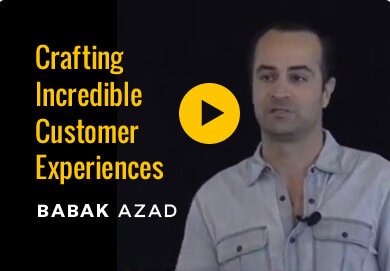
“What are the 1 or 2 key levers that can move my business?” I’ve gotten this question several times this week. My process of working with folks to know the key levers in their particular business is a bit more involved than a simple answer. And I’ll be posting that process soon.
But in the interests of simplifying it down to 2 buckets, I’d say that it comes down to focusing in on these two areas:
- Customer Success
- Cash
There are nuances to each of these. They can be at odds with one another at times.
But at the end of the day, are you doing everything you can to increase the chances of success for your customers? What about the magnitude of that success?
And are you following the cash? Are you maximizing revenues, cutting down expenses, and managing cash effectively (see my post here).
Customer Success
Some businesses call them customers. Some call them clients. Others, unfortunately, have bad names for them. (For simplicity sake, I’m going to refer to them as customers and will speak in the context of a product, even though it could also be a service.) But there is a reason these people have paid you money, bought your product, signed up for your list, come to see you speak, etc. Or maybe they have expressed interest and they haven’t converted.
There is a problem they want you to help them solve. So take a look at what you’re doing and ask yourself, “Are we doing everything we can to support success for our customers?”
Whatever your brand promise, does your product do what you say it’s going to do? When you talk with customers and solicit feedback from them (you do talk with your customers, right?), what do they like most about what you provide and what are their pain points? These are very easy places to start.
Then look a layer deeper to how customers experience your product:
- Do you make it difficult / painful to order?
- What is the emotion after ordering (hopefully slightly better than when people get their driver’s license renewed at the DMV)?
- How long does it take from the time they order to the time they receive your product or gain access to it?
- Do customers have access to information about the status if there is a lag? (Ever been to a restaurant and wondered if they had to go find a chicken to lay an egg to make your omelet?)
- If it’s a SaaS product, what is the onboarding experience like (here is a great breakdown of various products – https://www.useronboard.com/onboarding-teardowns/ )
You’ll notice that none of these have to do with the customer actually using the product or service. But they are experiencing your business. And if you are making the process before they get to the product or service miserable, you are affecting their mindset which is going to affect their experience. If you screw up the ordering and the wait, you are messing up the product. A product has to be off-the-charts amazing to make up for a crap experience prior to getting it. (Going back to the restaurant analogy, ever waited so long for a drink to arrive, that when it does you say, “I don’t even want it anymore?”)
Once a customer begins using the product:
- Are the instructions clear? (My son just got a Gorilla Gym – looks super cool. Except the written instructions are atrocious. I need to watch a video but didn’t have a computer next to me, which means it’s been sitting on a table for 3 days.)
- If a customer has questions, is it clear where they should go? Is it clear how long it takes to get a response? Is that promise met?
- If something breaks, how miserable do you make the experience to fix or replace it?
- What else does a customer need to use your product? (“Batteries not included?” Grrrrrrr. Or, ever bought something with a triple-prong for the outlet but your extension cord only has 2 prongs? Friggin’ drives me crazy. And I still don’t know why some products need 3 vs. 2. And frankly, I don’t care. I just want to be able to plug it in.)
- If I want to return your product or cancel the service, do you make it difficult? Or worse yet, do you offer me a better deal than I already had? (Mobile carriers and cable companies do this all the time – why does it take me saying I’m leaving for you to give me a better deal?)
Here’s the thing about these types of issues – some of them are zero cost and some of them will require investment. And I’m not saying that you should literally do everything that someone can dream up to support a customer. Much of this stems from your brand promise. If you’re a personal trainer, I’m not saying you should get in the food delivery business. But it might not be crazy for you to partner with a food delivery company, HealthyOut for example, to suggest to your clients?
And remember, the question was about originally about identifying key levers in your business. This is more about the fact that if you focus on your customer’s success, you’ll likely find some key levers.
Cash
Sounds like an obvious area. But sometimes it’s about realizing that you don’t need to make things more complicated than they need to be.
What generates cash? What costs you cash? What are you doing to manage cash?
And yes, I’m aware that the above section on Customer Success may cost you cash. Or it may cost you cash, in the short term. But you make it up with lower returns, stronger brand loyalty and word of mouth in the longer term.
Focusing on cash isn’t necessarily the yin to the Customer Success yang. But rather it’s another lens through which to look at your business.
- How much are you generating from customers? Have you maximized revenues? (Note, you might maximize revenues at the expense of customer experience – I’m not saying one is right or wrong. Just be aware.)
- Many times, your customer would actually like to give you more money. Russell Brunson did a great podcast on this recently – http://goo.gl/G886vh. He gave one example of wishing his pool cleaning company would’ve picked up on his question about replacing his pool filter by offering to do it for him.
- Or perhaps you sell a 30-day supply of a protein powder. Do you actually email the customer on day 27, or ever for that matter, reminding them that they are likely running low on the powder. And if they just click the button below, they can re-order? By the way, this nicely falls under the Customer Success bucket as well. Always nice when it fits under both.
- While offering installment plans may actually lead to some bad debt, do you generate more customers by doing so? The answer is likely yes.
- Do your sales reps – whether on the phone or in a physical store – know enough to suggest a complementary item to what a customer is already purchasing? Suggesting a really cool belt to go with the shoes I just bought doesn’t have to be an intrusion. In fact, many people would appreciate the guidance. And voila, you’ve increased cash. And increased Customer Success.
What about expenses:
- If you’re a growing company, when was the last time you revisited pricing from your vendors?
- Is there a vendor that is now available to you with your increased scale that wasn’t available to you previously? It’s all relative. Whether you do $1,000, $100K or $10MM per month, you should have someone accountable for reviewing expenses and pricing every quarter, especially when you’re growing. One of the biggest challenges growing companies face is behaving like a bigger and grown-up company. Too often expenses and vendor pricing are the big areas overlooked.
- Take a look at your company credit card (or your personal one for that matter). I’m guessing there are a host of services with recurring billing that you don’t use anymore. Take the 15 minutes and cancel them.
- UberX vs. Uber Black Car – there’s being penny-wise and pound foolish. And then there’s just no need to spend more. Both options are clean and will get you where you want to go.
There’s also simply cash management:
- If you prepaid your vendors, or had tighter terms, would they give you a discount? Maybe that $35 wire is worth incurring. Or maybe you just need to bring a bit more cash into that bank account to get the wire fees waived?
- Have you asked for terms from your vendors? Sure, the 0.2% interest you get on your cash may not seem like much, but it’s always nice to have more cash in the bank longer. And I’ve found that when you start paying attention to these little things, more little things catch your eye. And those lotta littles start adding up.
At the end of the day, a business should serve customers and generate cash. (I’ll ignore both Amazon which has a heavy reinvestment strategy and venture-backed companies which have a different philosophy for the moment. These are by far the exceptions rather than the rule on how most businesses operate.)
Make sure you are helping your customers succeed.
Follow the cash.
You’ll likely find plenty of gaps and opportunities.
And you should hopefully build a better business in doing so.
Please leave a comment below because I’d like to hear what you think.
You can also follow me on social media or connect with me directly by clicking the links to the left.






Leave a Reply
You must be logged in to post a comment.